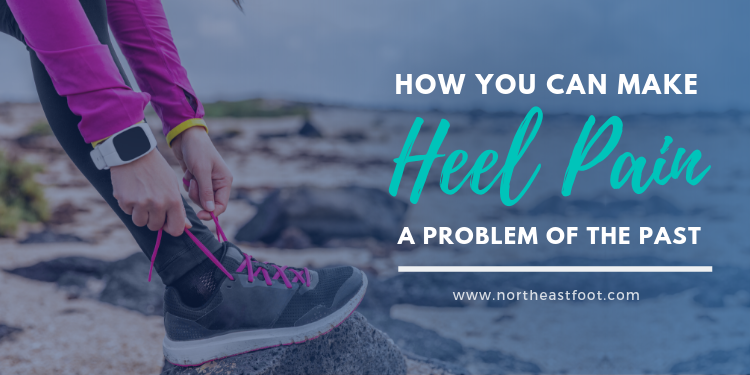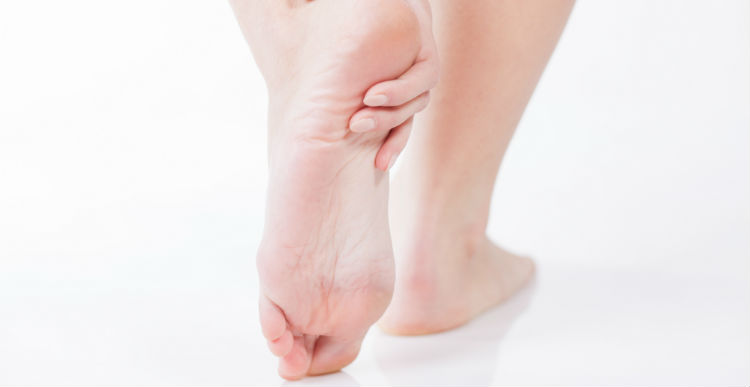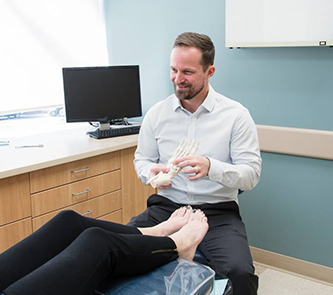From the Bottom of My Sole
Valentine’s Day has come and gone, and for many of us, heel pain was be our ever-loyal “wingman.”
To put it in perspective:
1 in every 3 Americans today have experienced foot pain at least once in their lifetime. This means that millions of us took our heel pain on romantic walks, passionate dance lessons, and quiet dinners this February 14.
But don’t be mistaken.
Though this condition is very common, you shouldn’t be quick to dismiss it as normal or “not a big deal.” Our heels in particular bear a lot of weight and impact forces, as they are usually the first part of our feet to come into contact with ever-varying surfaces. It’s no wonder that your heels may very well start complaining!
Your relationship with heel pain may go back a long time, or maybe your discomfort has just now started to become a stage five clinger. But no matter your situation, you should never ignore heel pain. Doing so will only prolong the unwanted relationship—and the longer it sticks around, the worse it may get, and even more intensive treatments may be required.
It is time you say goodbye to this annoying condition, and here at Northeast Foot and Ankle we have the tools to help you permanently break up with heel pain.

Heel Pain – the Risk Factors
Usually, heel pain is brought about by faulty biomechanics and muscle tightness in the leg. If the way you walk differs even slightly from the ideal walking gait, then this can exert enormous amounts of stress on your heel bone and the soft tissues surrounding it over time.
However, there are some other risk factors you should also take into consideration:
- Bearing weight for long periods. If you routinely stand for long periods of time, then you might start experiencing heel pain. This is especially true when standing and walking on hard surfaces.
- If you are an older adult, then you will naturally be more prone to experiencing this type of discomfort.
- If your body mass is higher than average, then your feet and ankles will also be under higher-than-average pressure.
- Improper footwear. If you consistently wear shoes which provide poor shock absorption and support—especially during high-impact activities—your heels will eventually show signs of discomfort.
In fact, ill-fitting footwear is one of the main causes for heel pain—which leads us to our next point.
Find Your Sole Mate – Best Footwear for You
Using the right footwear is an essential part of preventing unhappy and unhealthy heels. This can minimize—if not altogether eliminate—your foot pains. So, when looking for the perfect shoes to help you and your heels have a better relationship, here are some things you should keep in mind:
- The perfect fit. Make sure you always have plenty of room to move your toes freely. Your heels and toes should be gently hugged rather than squeezed.
- Your sole mate. You should always opt for supportive footwear. Use the “twist test” to make sure the soles provide the support you need. You can do this by simply holding the back of the shoe with one hand then grabbing the front of the shoe with the other and twisting. Shoes with supportive soles will resist this twisting motion.
- Reject flats. Shoes which lay completely flat on surfaces are not recommended and should be avoided whenever possible. Remember, you should look for support—something of which flats provide none.
- Made just for you. Custom orthotics can also be a great complement to most types of footwear. They provide support and comfort to fit your specific needs.
Now that you are aware of the best ways to show your heels some love, you may be wondering what is really upsetting your feet. Of course, it is best to come pay us a visit in order to fully diagnose your condition, but there are some very common diagnosis which may be bringing about all this pain.
Let’s quickly touch upon the subject!

The Underlying Issue
If your heels have been hurting for a long time now and nothing you do seems to be working, then there may be some underlying conditions which could be causing you pain. Some of the most common diagnosis are:
- Plantar Fasciitis. When the fibrous band of tissue running along the bottom of the foot is partially torn by excessive stress.
- Excessive pronation. When an abnormal amount of stretching and pulling on the ligaments and tendons of the heel bone is created.
- Achilles tendinitis. When the Achilles tendon becomes inflamed from overexertion.
If heel pain has basically been stalking your every move, then you should seek professional diagnosis and treatment immediately.
Come Visit Us Today!
Here at Northeast Foot and Ankle, we have just what you need to finally kiss heel pain goodbye. All you have to do is be proactive and come pay us a visit today!
To schedule an appointment with us, please call (603) 431-6070 or simply fill out our handy request form online.
Pay Your Bill
Make a payment online through our payment portal or Care Credit!
Portsmouth Office
14 Manchester Square, Suite 250
Portsmouth, NH 03801
Nashua Office
17 Riverside Street, Suite 205
Nashua, NH 03062
Website Hosted by SC Digital



